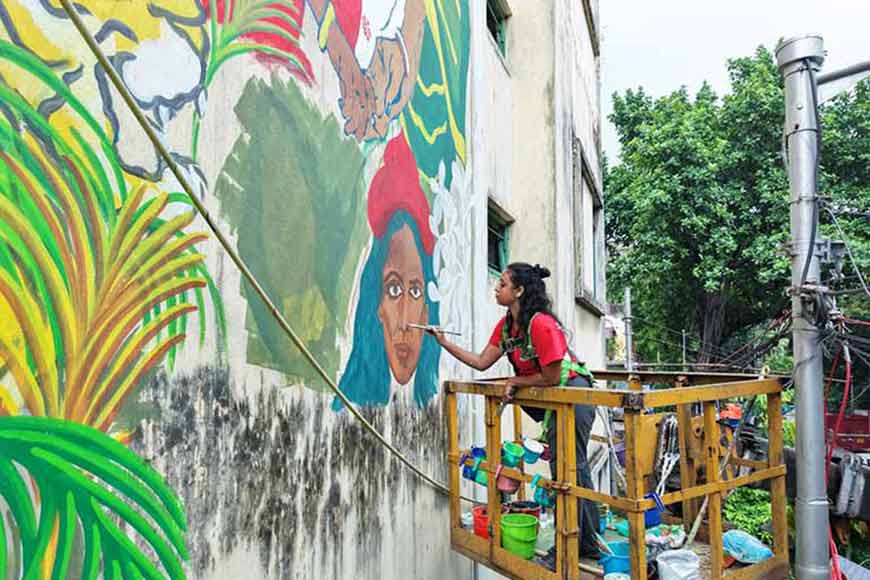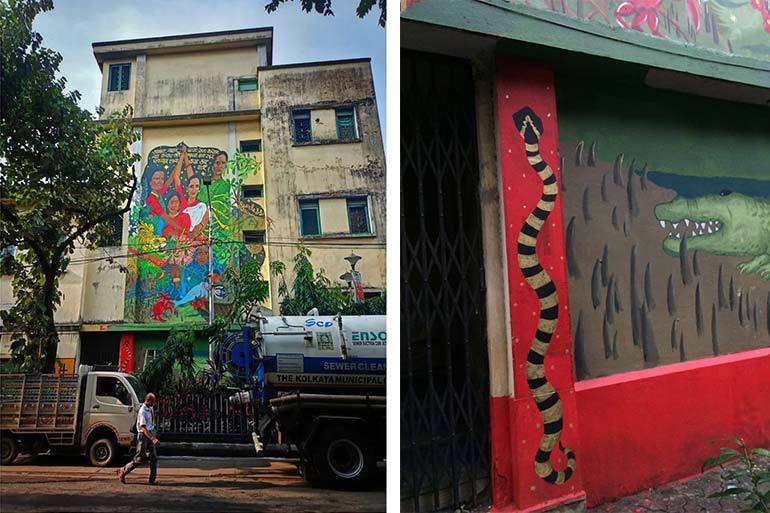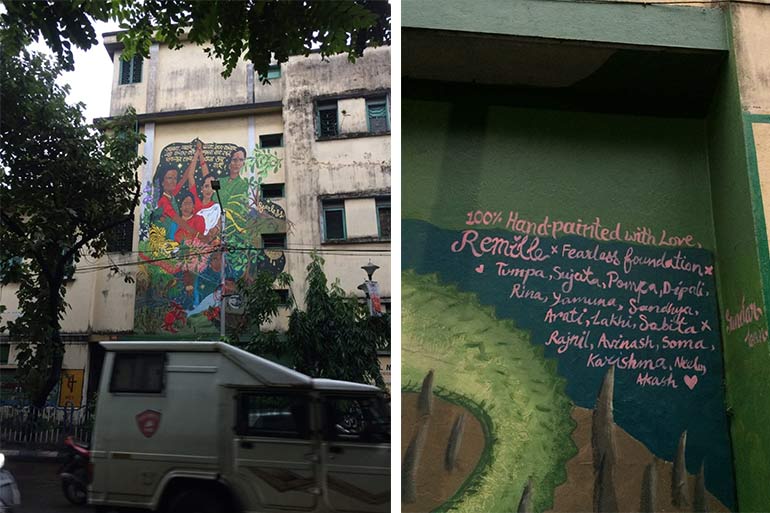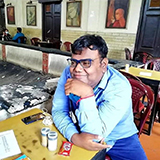Sundarbans in the heart of Kolkata: Remille’s artistic homage – GetBengal story

Amidst Kolkata’s rallies and protest marches, towering rows of high-rise apartments, traffic jams, corporate deadlines, and the familiar haunts of Nandan, the Lake, Coffee House, College Street, and the Academy of Fine Arts, a piece of the Sundarbans has found its way into the very heart of the city, on Lenin Sarani.
On the wall of the Jones Lee Memorial School in Dharmatala now stretches a striking mural by artist Remille Bargi. Spanning nearly forty feet, this artwork pays tribute to the women of the Sundarbans and to Bonbibi, the forest goddess revered as the protector of the mangroves.

The Sundarbans — mysterious and breathtakingly beautiful — is a place where every bend can hide death, where humans and wildlife share a fragile coexistence, and where biodiversity thrives in abundance. It is this harmony between the ecosystem and its people that forms the central theme of Remille’s mural.
Remille explained, “This project came through a grant program by the feminist organization Fearless Collective, which mainly works with South Asian women muralists. In 2025, I received this grant from Kolkata. Recipients of this grant travel to different places, work with various communities, and then create murals to give those communities a ‘visual representation’ of their stories. After receiving the grant, I first went to Sri Lanka, where I collaborated with people from different communities and painted a mural there as well. Since I grew up in Kolkata, after returning, I decided to create this mural on the Sundarbans.”
As for why she chose the Sundarbans, she explained, “There’s no end to today’s environmental crises. I chose this subject to bring such issues into focus. I held a workshop there and visited Satjelia Island. I stayed there, worked with the women of the community, listened to their stories, and learned about their experiences. From among them, I portrayed four women in the mural.”
She went on to say, “People from various communities live in the Sundarbans. Life there is extremely difficult — it’s about surviving against all odds. When you talk to them, you realize that despite so many challenges, they prefer living there rather than in Kolkata. When they come to Kolkata for work, they often face mistreatment. They were born there, and they want to remain there. My father’s ancestral home is in Canning, and I grew up hearing stories about the Sundarbans. Most people in my village are from the Sundarbans. I’ve always felt a pull towards it. I had visited earlier as a tourist, but this time I stayed and worked there.”

Reaching out to people from different communities and portraying them through murals has become a defining aspect of Remille’s work. A graduate of Kala Bhavana, Visva-Bharati, Santiniketan, she is a full-time visual artist. Since 2012, she has been creating public art, including murals and graffiti.
Why bring the story of the Sundarbans into the heart of Kolkata? In response, Remille said,
“I could have painted the mural in the Sundarbans itself, but we decided to create it in Kolkata. Those of us who live in this city often forget how close the Sundarbans really are to us. I wanted to raise awareness among Kolkata’s people about the Sundarbans. If seeing this mural makes even one person think about the Sundarbans, it’s worth it. I chose Lenin Sarani because I wanted to do it in central Kolkata — a place where people from many different areas come to work. I searched for many walls, and the Lee Memorial School granted me permission to do it there.”
Remille completed the entire mural in just four days, with assistance from Karishma Siddique Ray, Soma Kabiraj, and Rajnil Bargi. Using a rented crane, she worked high above the ground to bring her vision to life. Speaking about the artwork, she explained,
“Along with the women, I have also painted Bonbibi. People of all religions worship Bonbibi. Those who go into the forest, those who go fishing — everyone prays to her. I felt it was important to show that there is one deity whom everyone can worship. As for the four women I painted, they are local residents. They fish, they farm, and when necessary, they work in eco-tourism resorts in the area. I wanted to include the theme of eco-tourism in my painting.”
There was a time when nature itself was worshipped as God — a way to pray for protection and survival. In the folk traditions of Bengal, forests, rivers, and hills are still worshipped in certain places. For years, the Sundarbans has been shielding West Bengal, including Kolkata, from nature’s fury. The mangroves stand as a barrier against devastating cyclones. People visit the Sundarbans to see its beauty, to catch a glimpse of the tiger, and to marvel at its cyclone-battered resilience. But how many of us truly express our gratitude?

On a brick wall in the heart of Kolkata, Remille has painted the life and essence of the Sundarbans. Beyond the people of the mangroves and Bonbibi, the mural also features salt-tolerant plants, tigers, snakes, crocodiles, traditional Sundarbans boats, crabs, river dolphins, the struggle for survival, and the natural environment. In a way, it stands as an expression of gratitude.
Countless people pass along Lenin Sarani every day — some pausing for a moment to take in the mural. If, even amid their busy schedules, they stop to think about the Sundarbans for just a brief moment, the artist’s vision and hard work find their true fulfillment.
Note : Translated by Sabana Yasmin
To read the original Bengali article , please click here :











